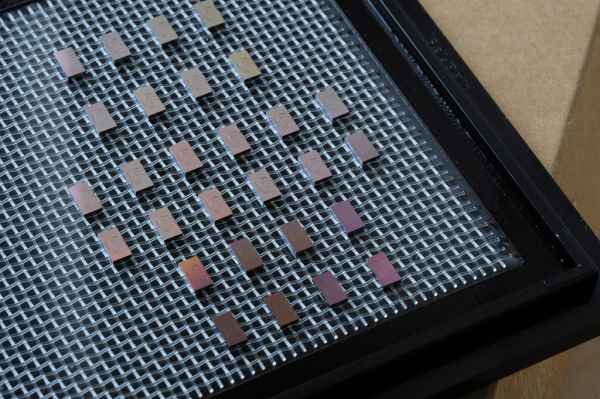Tiny device could replace expensive lab-scale equipment for many applications.
Spectrometers — devices that distinguish different wavelengths of light and are used to determine the chemical composition of everything from laboratory materials to distant stars — are large devices with six-figure price tags, and tend to be found in large university and industry labs or observatories.
A new advance by researchers at MIT could make it possible to produce tiny spectrometers that are just as accurate and powerful but could be mass produced using standard chip-making processes. This approach could open up new uses for spectrometry that previously would have been physically and financially impossible.
The invention is described today in the journal Nature Communications, in a paper by MIT associate professor of materials science and engineering Juejun Hu, doctoral student Derek Kita, research assistant Brando Miranda, and five others.
The researchers say this new approach to making spectrometers on a chip could provide major advantages in performance, size, weight, and power consumption, compared to current instruments.
Other groups have tried to make chip-based spectrometers, but there is a built-in challenge: A device’s ability to spread out light based on its wavelength, using any conventional optical system, is highly dependent on the device’s size. Hu say:
If you make it smaller, the performance degrades,
Another type of spectrometer uses a mathematical approach called a Fourier transform. But these devices are still limited by the same size constraint — long optical paths are essential to attaining high performance. Since high-performance devices require long, tunable optical path lengths, miniaturized spectrometers have traditionally been inferior compared to their benchtop counterparts.
Instead, “we used a different technique,” says Kita. Their system is based on optical switches, which can instantly flip a beam of light between the different optical pathways, which can be of different lengths. These all-electronic optical switches eliminate the need for movable mirrors, which are required in the current versions, and can easily be fabricated using standard chip-making technology.
Read more: Inexpensive chip-based device may transform spectrometry


